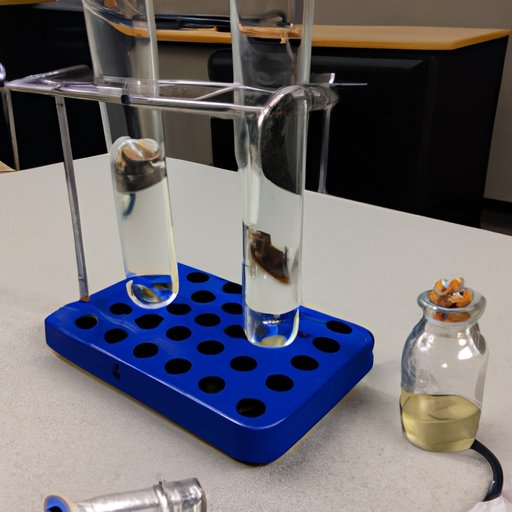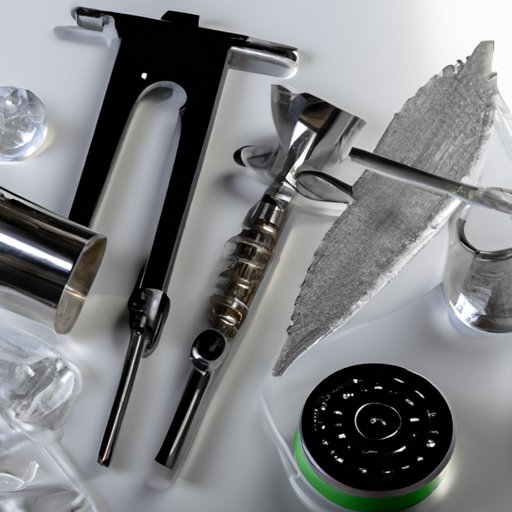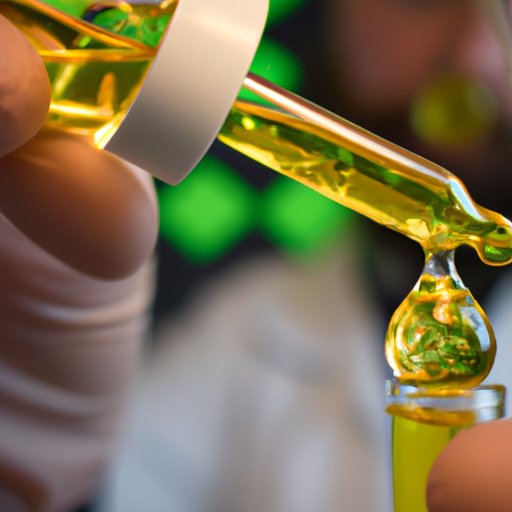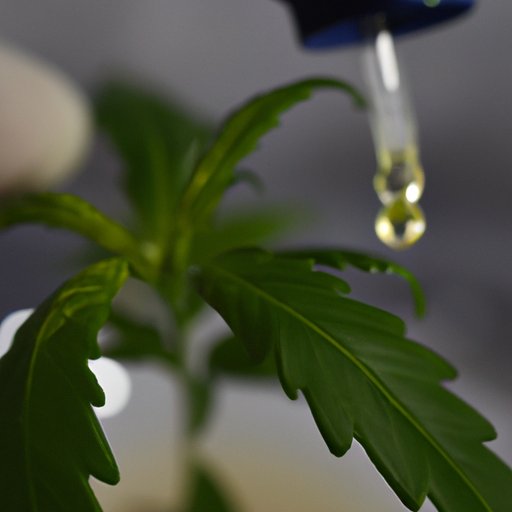Introduction
CBD, or cannabidiol, is a natural compound found in hemp plants known for its potential therapeutic benefits. This non-psychoactive compound has been found to help with pain relief, anxiety, and insomnia. However, before CBD can be used in products such as oils or gummies, it must be extracted from the hemp plants.
There are many different methods of CBD extraction, each with its own pros and cons. In this article, we will explore the most popular methods of extracting CBD from hemp plants and provide a step-by-step guide for using a CO2 extraction machine. We’ll also discuss the importance of selecting the right hemp strain and equipment for CBD extraction, as well as the science behind how cannabinoids can be extracted.

Understanding the CO2 Extraction Method
The CO2 extraction method is considered the gold standard for CBD extraction. This method uses high pressure and low temperatures to extract CBD from hemp plants in a safe and efficient manner. CO2 is a non-toxic gas that can be used in a liquid or gas state to extract cannabinoids from the hemp plant.
To use a CO2 extraction machine, first, the hemp plant material is loaded into a chamber. Then, CO2 is pumped into the chamber, where it interacts with the plant material to extract the cannabinoids. The resulting mixture is then passed through a separator, which separates the CBD oil from the plant material and CO2.
The pros of using the CO2 extraction method are that it is safe and efficient, producing a high yield of CBD oil. Additionally, this method allows for the extraction of not only CBD but also other cannabinoids and terpenes present in the hemp plant, which can contribute to the overall effectiveness of the final product.
However, the cons of using the CO2 extraction method are that it can be costly and require specialized equipment. Additionally, this method requires a significant amount of plant material to produce a large yield of CBD oil.
Comparing Different CBD Extraction Methods
In addition to the CO2 extraction method, there are other popular methods of CBD extraction, including ethanol and olive oil extraction.
Ethanol extraction involves soaking the hemp plant material in ethanol to extract the cannabinoids from the plant. The resulting mixture is then filtered and distilled to remove any impurities. The pros of using ethanol extraction are that it is safe, inexpensive, and efficient. The cons are that it can also extract chlorophyll, which can result in a less pure product, and the process can be time-consuming.
Olive oil extraction involves heating the hemp plant material in olive oil to extract the cannabinoids. The resulting mixture is then filtered and separated. The pros of using olive oil extraction are that it is safe, inexpensive, and produces a relatively pure product. Additionally, this method is simple and does not require any specialized equipment. The cons are that it is not very efficient and has a relatively short shelf life, making it less suitable for commercial use.
Compared to CO2 extraction, ethanol and olive oil extraction are less expensive and can be done using simpler equipment. However, they are not as efficient and can produce a less pure product.
Pros and Cons of Different CBD Extraction Methods
There are many other CBD extraction methods available, each with its own pros and cons. Here are some of the most common:
- Butane and propane extraction
- Hydrocarbon extraction
- Ice water extraction
- Steam distillation
The pros of butane and propane extraction are that they are relatively inexpensive and produce a high yield of CBD oil. However, they can be dangerous and require specialized equipment. Hydrocarbon extraction is similar to butane and propane extraction but uses solvents like hexane or propane instead. The pros of this method are that it produces a high yield of CBD oil and is relatively inexpensive. The cons are that it is highly flammable and can be dangerous.
Ice water extraction involves freezing the plant material and then agitating it in ice water to extract the cannabinoids. The pros of this method are that it produces a high yield of CBD oil and is relatively safe. The cons are that it can be time-consuming and require specialized equipment.
Steam distillation involves heating the plant material in steam to extract the essential oils, including CBD. The pros of this method are that it is safe and relatively inexpensive. The cons are that it produces a low yield of CBD oil and is not very efficient.
Selecting a High-Quality Hemp Strain for CBD Extraction
When selecting a hemp strain for CBD extraction, there are several factors to consider. The first is the CBD content of the strain. Look for strains that are high in CBD and low in THC, the psychoactive compound found in marijuana. Additionally, consider the aroma and flavor of the strain, as these can affect the overall quality of the final product.
It’s also important to look for strains that are grown using organic methods, as this can minimize the amount of pesticides and other harmful chemicals present in the plant material. Finally, consider the overall quality of the strain, including its appearance, texture, and overall health.

Equipment and Tools Necessary for CBD Extraction
When extracting CBD from hemp plants, there are several pieces of equipment and tools you will need. These include:
- A CO2 extraction machine or other CBD extraction equipment
- A source of high-quality hemp material
- Solvent or reagents, depending on the method of extraction
- A distillation apparatus for purifying the CBD oil
It’s important to choose high-quality equipment and tools to ensure a safe and efficient extraction process. Consider purchasing equipment from reputable suppliers and manufacturers, and be sure to follow all safety guidelines and protocols when using the equipment.

The Science of CBD Extraction
When extracting CBD from hemp plants, it’s important to understand the different cannabinoids present in the plant material and how they can be extracted. In addition to CBD, hemp plants contain many other cannabinoids, including THC, CBG, and CBN.
CBD has been found to have potential therapeutic benefits, including anti-inflammatory and pain-relieving properties. THC, on the other hand, is the compound responsible for the psychoactive effects of marijuana. CBG and CBN are lesser-known cannabinoids that are currently being studied for their potential therapeutic benefits.
There are many different methods for extracting specific cannabinoids from hemp plants, including chromatography and fractional distillation. These methods allow for the separation and isolation of specific cannabinoids, which can then be used in a wide range of products.
Conclusion
Extracting CBD from hemp plants can be a complex process, but with the right equipment, tools, and knowledge, it can be done safely and efficiently. Whether using the CO2 extraction method or another method, it’s important to choose high-quality hemp material and to follow all safety guidelines and protocols when extracting CBD.
If you’re interested in extracting CBD from hemp plants, we encourage you to do more research and to experiment with different extraction methods to find the one that works best for your specific needs.
